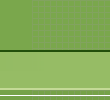|
INDOORS & OUTDOORS
- CONSTANT HARVEST STRATEGY
One of the best
solutions to energy verses output for most home gardeners is to
use outdoor light for flowering and use continuous light indoors
for germination and vegetative growth. This will take advantage
of the natural light/dark cycle and cut your energy use in half
compared to the same operation indoors. A small greenhouse can
be built of Filon fiberglass or PVC sheets that is innocuous and
looks much like a storage shed or tool shed so it is not likely
to raise suspicions.
In fact, a large
shed of metal or plywood can be modified with a luminous roof of
PVC, glass, fiberglass or plastic sheet, and some strains that
do not require a great deal of light will grow well. Such a shed
will discourage fly-by sightings and keep your business your
own! It also allows you to keep out rats and gophers, keeps out
the neighbor kids, and can be easily locked up. It will also
give you an opportunity to actually plant in the ground if you
desire, and this is the best way to avoid root-bound plants (if
your not using hydroponics), and get bigger harvests.
In winter, indoor
space is used to start new seedlings or cuttings to be placed
outside in the spring, using natural sunlight to ripen the
plants. This routine will provide at least 3 outdoor/greenhouse
harvests per year. If more space is available to constantly be
starting indoors and flowering 2nd harvest plants outdoors,
harvests are possible every 60 days in many areas, with a small
indoor harvest in the winter as a possibility as well.
The basic strategy
of year round production is to understand the plant has two
growth cycles. At germination the plant enters into a vegetative
state and will be able to use all the continuous light you can
give it. This means there is no dark cycle required. The plant
will photosynthesis constantly and grow faster than it would
outdoors with long evenings. Photosynthesis stops during dark
periods and the plant uses sugars produced to build during the
evening. This is not a requirement and the plant will grow
faster at this stage with continuous photosynthesis (constant
light).
Once the plant is
12-18" tall, weather permitting, it can be forced to start
flowering by placing it outside in the Spring or Fall. (For
Summer outdoor flowering, the night must be artificially
lengthened in the greenhouse to "force" the plants to flower.
See FLOWERING chapter.)
Moving the plants
to 10-13 hour light periods (moving it outside) with
uninterrupted darkness (no bright lights nearby) will force the
plant to flower. It will ripen and be 2-3 when ready to harvest.
When a plant is moved from continuous indoor light to a 10-13
hour day outside, it will start to flower in anticipation of
oncoming winter. Vegetative starts moved outside March 1st, will
be ripe by May 1. Vegetative starts moved outside on May 1 will
be ripe by July 1. Starts moved outside Sept 1 are picked by
Nov. 1st. In Winter, operations are moved indoors and a crop is
planted for seed in anticipation of planting outdoors the next
summer, or just for some extra winter stash.
Keep in mind that
the "man" is looking for plants in the Sept./Oct./Nov.
time-frame, and may never notice plants placed outside to flower
in April. Be smart, make your big harvest in May, not October!
|









